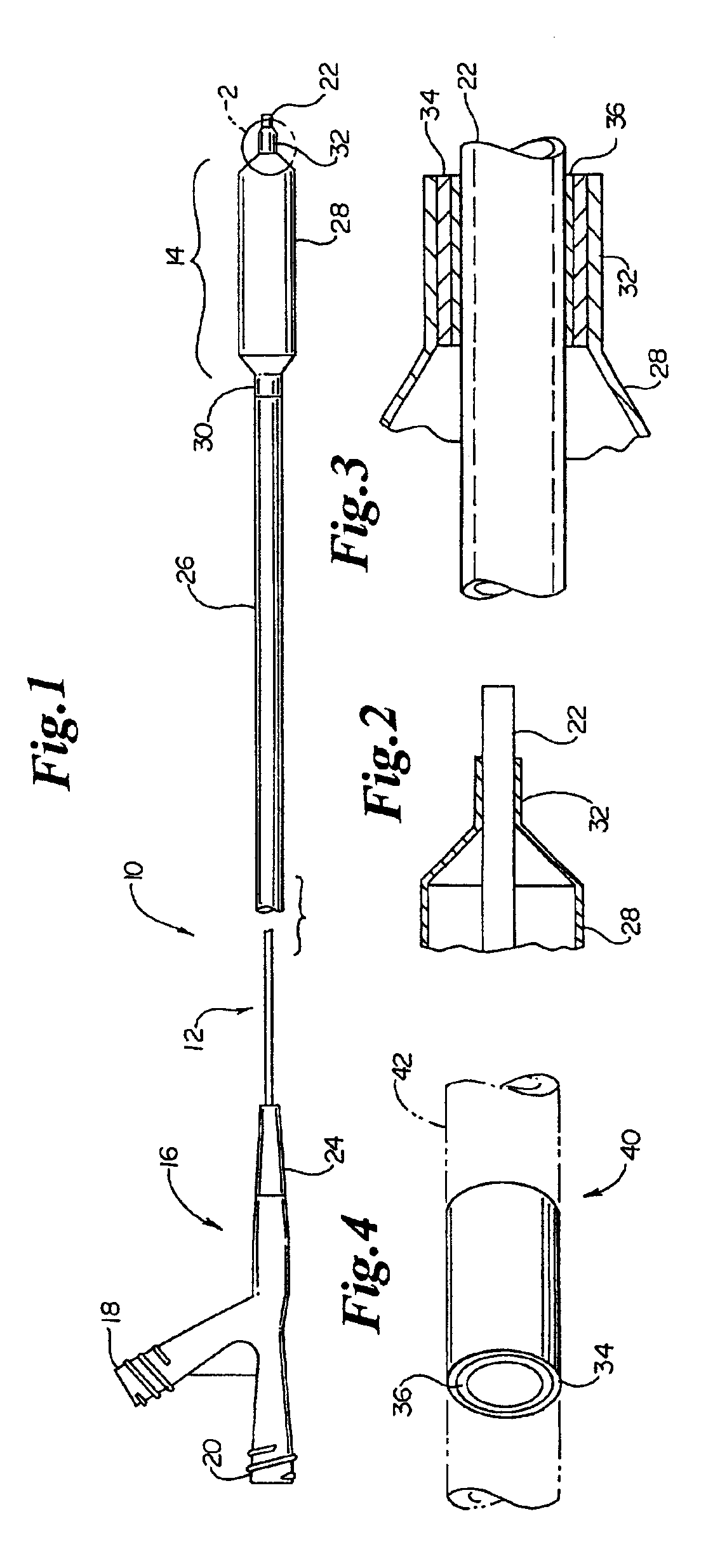Catheter having an improved balloon-to-catheter bond
a catheter and balloon technology, applied in the field of medical devices, can solve the problems of incompatibility of individual polymers forming structural components with each other, and achieve the effect of maximizing the benefits of a tie layer and improving bonding
- Summary
- Abstract
- Description
- Claims
- Application Information
AI Technical Summary
Benefits of technology
Problems solved by technology
Method used
Image
Examples
Embodiment Construction
[0015]The following detailed description should be read with reference to the drawings, in which like elements in different drawings are numbered identically. The drawings, which are not necessarily to scale, depict selected embodiments and are not intended to limit the scope of the invention. Examples of construction, materials, dimensions, and manufacturing processes are provided for selected elements.
[0016]Referring now to the drawings, FIG. 1 is a plan view of an over-the-wire (OTW) balloon catheter, which is representative of one type of catheter that can incorporate the present invention. Other intravascular catheter embodiments are additionally suitable without deviating from the spirit and scope of the present invention. For example, intravascular catheters suitable for incorporating the present invention also include fixed-wire (FW) catheters and single-operator-exchange (SOE) catheters.
[0017]The balloon catheter 10 includes a shaft assembly 12 and a balloon assembly 14 con...
PUM
| Property | Measurement | Unit |
|---|---|---|
| thickness | aaaaa | aaaaa |
| outer diameter | aaaaa | aaaaa |
| diameter | aaaaa | aaaaa |
Abstract
Description
Claims
Application Information
 Login to View More
Login to View More - R&D
- Intellectual Property
- Life Sciences
- Materials
- Tech Scout
- Unparalleled Data Quality
- Higher Quality Content
- 60% Fewer Hallucinations
Browse by: Latest US Patents, China's latest patents, Technical Efficacy Thesaurus, Application Domain, Technology Topic, Popular Technical Reports.
© 2025 PatSnap. All rights reserved.Legal|Privacy policy|Modern Slavery Act Transparency Statement|Sitemap|About US| Contact US: help@patsnap.com


